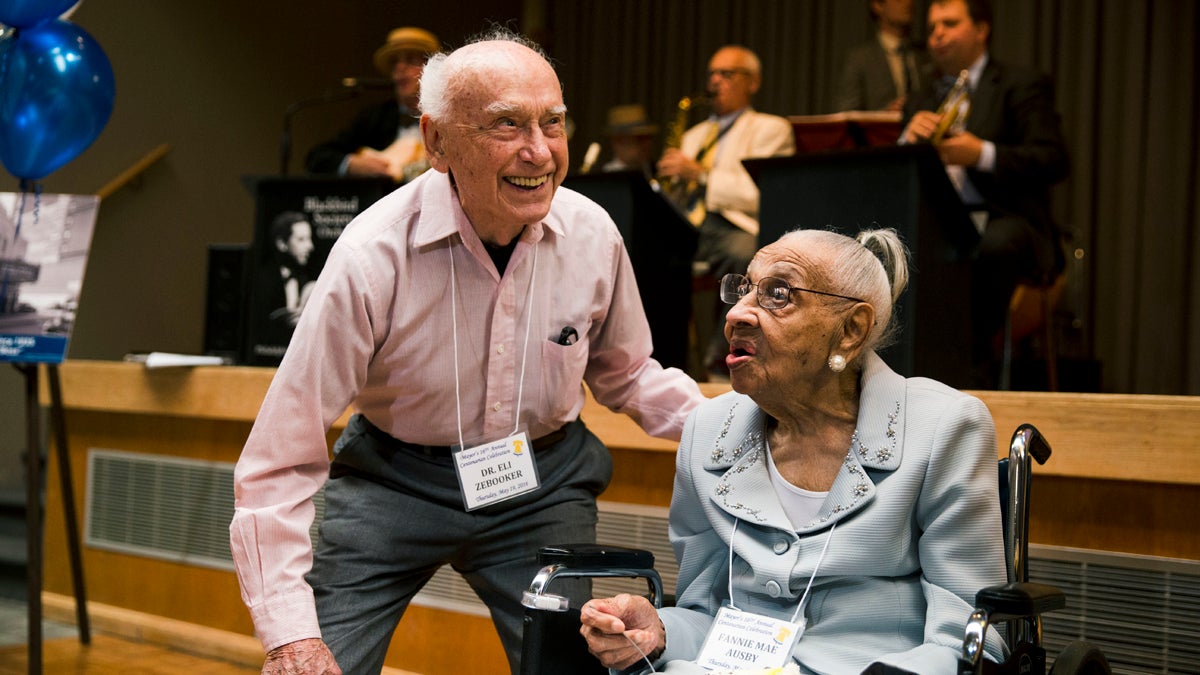State plan on aging reveals gaps, challenges of serving seniors

Eli Zebooker
Four-year strategic plan addresses aging in place and caregivers, among others.
Every four years, the state of Pennsylvania is required to file a strategic plan on aging that addresses issues faced by residents over the age of 60. With a rapidly aging population and a bubble of baby boomers preparing to retire, Pennsylvania has never needed that plan more.
The 2016-2020 plan has been released in draft form, but is still open to revision. The Pennsylvania Department of Aging held public hearings in Pittsburgh, Harrisburg and Philadelphia to solicit community feedback.
“Every public hearing brings up something new for us to consider,” said Theresa Osborne, secretary of aging. “Every hearing I’ve been at someone has said, ‘Hey, let’s take a look at that,’ or ‘let’s not forget about this.'”
The plan starts with a series of community meetings across the state, where seniors, caretakers and local leaders tell the state where they’d like to see more assistance available. Then, the department consults with the Pennsylvania Council on Aging and the 52 Area Agencies on Aging across the state. The final step is this comment period.
The plan will go into effect October 1st, and guide the state through 2020.
Main goals
“This plan builds on the guidelines established in 2012,” said Osborne. “We continue to build off of that platform to address the needs of seniors today, tomorrow and in the future. The plan shows that we are being responsive to seniors and shows how we utilize the dollars trusted to our care.”
Pennsylvania is the only state in the country that uses revenue from the lottery to pay for elder care and services, with 78 percent of the agency’s budget coming from the lottery and 22 percent coming from the federal government.
This year’s plan has four main goals: promote existing services, improve access to services, enhance quality of services and empower the workforce that works directly with seniors.
Those rather vague directives have more specific objectives that deal with issues like transportation, insurance, elder abuse and aging in place.
“What [seniors] are telling us is … are they going to have resources in place for them in order to remain living in their own homes?” said Osborne. “Can they indeed age in place?”
Rather than going to a nursing home or retirement facility, many seniors would rather be cared for their homes. The strategic plan increases workforce and volunteer development to make that a feasible option for seniors statewide.
Rebecca May-Cole, executive director of the Pennsylvania Association of Area Agencies on Aging, says that’s good progress.
“We were happy to see a focus on helping older adults age in place with dignity and respect by increasing the quality of services,” said May-Cole. “But we’d like to see more attention to senior centers, which are such a critical part of keeping seniors in their homes.”
May-Cole said senior centers help the elderly access services, improve their health and stave off isolation.
She applauded the state’s renewed focus on Alzheimer’s and related diseases.
The younger generation
PDA focuses on the needs of Pennsylvanians over the age of 60. But that demographic is served by a younger generation that has concerns of its own, according to the feedback and listening sessions.
“We heard a lot of feedback about the role of caretakers,” said Osborne. “We realize those caretakers are such a big part of aging in place and we need to make sure they can access services themselves or for the loved one they care for.”
The state offers a caregiver program, but Osborne says it has varied success around the state. The agency is currently analyzing that program to see how they could better reach caregivers.
In addition to unpaid family caregivers, the plan prioritizes training and monitoring paid caregivers in the home health industry. This tries to address the increased concern about elder abuse in Pennsylvania. May-Cole said there would soon be a need to recruit young people into the field, something the plan doesn’t address.
In Pennsylvania, many family caregivers are preparing for retirement themselves. In 2010, 21.4 percent of the state was over the age of 60. By 2030, that number is projected to be closer to 30 percent.
Is Pennsylvania prepared to deal with the baby boomer retirement bubble?
“My short answer? No,” said May-Cole. “That’s not to say they can’t be, but right now, no, they aren’t prepared.”
She’d like to see more funding allocated to the Area Agencies on Aging and related programs. And while the strategic plan isn’t a funding document, she sees it as a step in the right direction with a number of objectives that could garner more funding.
“But, right now, when we have 4,000 people on a waiting list for lottery-funded programs, it’s hard for us to plan for the future,” said May-Cole. “We can’t plan for more retirees when we can’t even serve everyone right now.”
WHYY is your source for fact-based, in-depth journalism and information. As a nonprofit organization, we rely on financial support from readers like you. Please give today.


